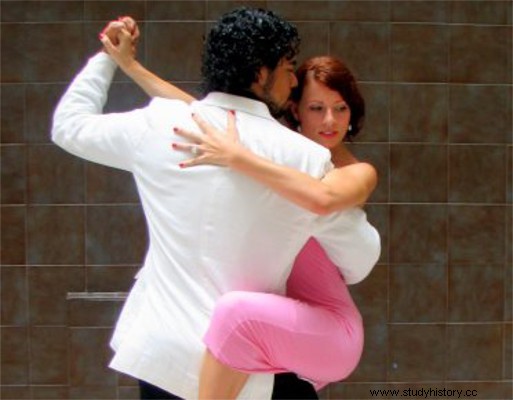
Dance, like other artistic manifestations, is a way of expression capable of representing different ideas. With each new type of dance, values are perpetuated that make a certain dancing style synonymous with certain feelings. In Argentina, tango has become synonymous with passion, melancholy and sadness. As a famous expression states, “the tango is a sad thought that can be danced”. However, contrary to what we think, tango was not “born” sad and Argentine.
During the 19th century, the young Argentine nation encouraged the entry of European immigrants into the country to that they could expand the available manpower and, according to reports at the time, “refine” the culture through contact with Spaniards, French, Poles and Italians. From the contingents brought in to take up new jobs in Argentina, an immense male population was formed, leaving their families to try their luck in foreign lands. In a short time, the male population surplus made it possible to open several brothels in the country.
According to recent research, at the end of the 19th century, the capital Buenos Aires alone had more than 200 houses of prostitution. The demand for prostitutes was so great that men lined up waiting for easy sexual pleasure. That's when, the large circulation of people in Argentine brothels gave space for the staging of musical numbers while customers waited for their turn. At that moment, groups appeared that exchanged their different musical experiences. European polka, Cuban havaneira, Uruguayan candombe and Spanish milonga established the birth of Argentine tango.
In its early years, tango was formed by a musical trio that performed faster rhythms and the dance steps had a lot of sensuality. It was only later that the tangos began to gain their first lyrics. Living up to its place of origin, the first lyrics described lewd situations about brothels and prostitutes. That's why, for a while, tango was synonymous with immorality. People of "good nature" had a real aversion to the practice of this type of dance music. However, immigrants returning to Europe had popularized the style, especially in the city of Paris.
The various attacks against tango lost strength due to the popularization and the transformations suffered with the arrival of the rhythm in Europe. Also attacked by religious people, the tango was even danced for Pope Pius X, so that he could judge its characteristics. Approved by Your Holiness and influenced by the European school, tango began to take on a slower rhythm and more cadenced steps. At the beginning of the 20th century, the lyrics begin to incorporate themes outside the brothel. Later, it came to be considered a typical artistic expression of “all” Argentines.
Leaving the brothels for the ballrooms, the tango reached its maximum popularization with the resounding success of the singer Carlos Gardel. Known as one of the most famous tango singers, Gardel showed his music on stage and internationalized his art with the recording of the film “El Dia Que Me Quieras”. Even today, tango is one of the best-known artistic expressions in Argentina and its shows attract tourists from all over the world.
